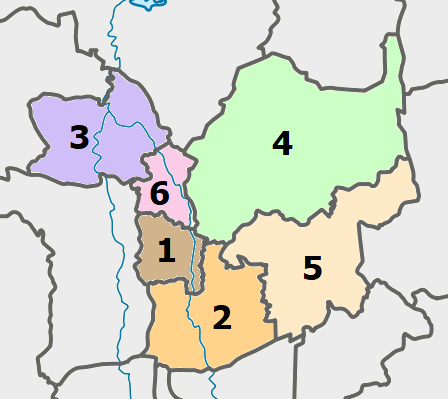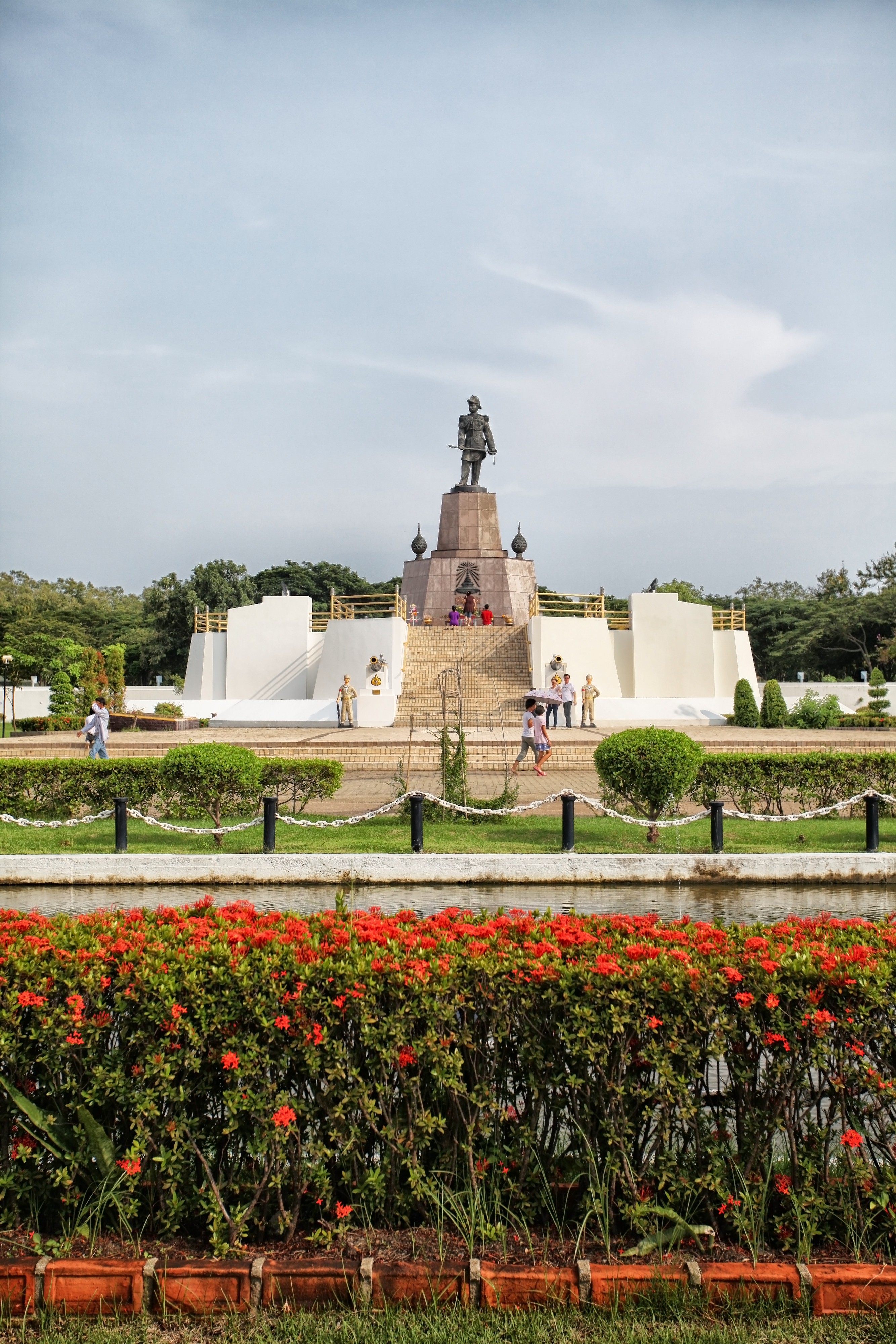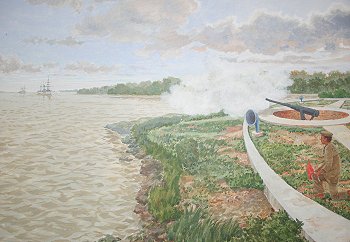|
Wat Phra Samut Chedi
250px, Wat Phra Samut Chedi Wat Phra Samut Chedi ( th, วัดพระสมุทรเจดีย์, ) is an ancient Buddhist temple in Phra Samut Chedi District, Samut Prakan Province, central Thailand. Lined on the Chao Phraya River's bank in the area of Pak Khlong Bang Pla Ko Sub-district, near Phisuea Samut Fortress and Chulachomklao Fort, which was built to protect the mouth of the Chao Phraya River and played an important role during the "Paknam Incident" (July 1893) in the King Rama V's reign. The most striking feature of the temple is "Phra Samut Chedi", the '' chedi'' (stūpa) of the same name and also the origin of the district where it is located. It was built since the King Rama II's reign but was completed during the subsequent reign, King Rama III Nangklao ( th, พระบาทสมเด็จพระนั่งเกล้าเจ้าอยู่หัว, ; 31 March 1788 – 2 April 1851), birth name Thap ( th, ทับ), also styled Ram ... [...More Info...] [...Related Items...] OR: [Wikipedia] [Google] [Baidu] |
Phra Samut Chedi District
Phra Samut Chedi ( th, พระสมุทรเจดีย์, ) is the westernmost district (''amphoe'') of Samut Prakan province in central Thailand. Geography Neighboring districts are (from the west, clockwise) Bang Khun Thian and Thung Khru of Bangkok, Phra Pradaeng and (across the Chao Phraya River) Mueang Samut Prakan of Samut Prakan Province. History The district was created as a minor district (''king amphoe'') on 15 December 1984 by splitting off five ''tambons'' from Mueang district. It was upgraded to a full district on 15 July 1991. Administration The district is divided into five sub-districts (''tambons''), which are further subdivided into 42 villages (''mubans''). There are two townships (''thesaban tambons''): Phra Samut Chedi covers ''tambon'' Pak Klong Bang Pla Kot, and Lae Fa Pha covers parts of ''tambons'' Laem Fa Pha and Nai Khlong Bang Pla Kot. There are a further four tambon administrative organizations (TAO), for each ''tambon'' except Pak Klong B ... [...More Info...] [...Related Items...] OR: [Wikipedia] [Google] [Baidu] |
Central Thailand
Central Thailand (Central plain) or more specifically Siam (also known as Suvarnabhumi and Dvaravati) is one of the regions of Thailand, covering the broad alluvial plain of the Chao Phraya River. It is separated from northeast Thailand (Isan) by the Phetchabun mountain range. The Tenasserim Hills separate it from Myanmar to the west. In the north it is bounded by the Phi Pan Nam Range, one of the hilly systems of northern Thailand. The area was the heartland of the Ayutthaya Kingdom (at times referred to as Siam), and is still the dominant area of Thailand, containing as it does, the world's most primate city, Bangkok. Definition The grouping of Thai provinces into regions follow two major systems, in which Thailand is divided into either four or six regions. In the six-region system, commonly used in geographical studies, central Thailand extends from Sukhothai and Phitsanulok Provinces in the north to the provinces bordering the Gulf of Thailand in the south, excluding the m ... [...More Info...] [...Related Items...] OR: [Wikipedia] [Google] [Baidu] |
Chao Phraya River
The Chao Phraya ( or ; th, แม่น้ำเจ้าพระยา, , or ) is the major river in Thailand, with its low alluvial plain forming the centre of the country. It flows through Bangkok and then into the Gulf of Thailand. Etymology On many old European maps, the river is named the ''Mae Nam'' (Thai: แม่น้ำ), the Thai word for "river" (literally, "motherly water"). James McCarthy, F.R.G.S., who served as Director-General of the Siamese Government Surveys prior to establishment of the Royal Survey Department, wrote in his account, "''Mae Nam'' is a generic term, ''mae'' signifying "mother" and ''Nam'' "water," and the epithet Chao P'ia signifies that it is the chief river in the kingdom of Siam." H. Warington Smyth, who served as Director of the Department of Mines in Siam from 1891 to 1896, refers to it in his book first published in 1898 as "the Mae Nam Chao Phraya". In the English-language media in Thailand, the name Chao Phraya River is oft ... [...More Info...] [...Related Items...] OR: [Wikipedia] [Google] [Baidu] |
Chulachomklao Fort
Phra Chulachomklao Fort (; also known as "Phra Chun Fort") is a water fortress in a sub-district in Khlong Bang Pla Kot, Phra Samut Chedi District, Samut Prakan Province. With no evidence of the date, approximately in March 1884, King Chulalongkorn (King Rama V) built this fort to protect the enemy from England and France. The King Rama V built this fort as a western artillery turret, which contained 7 153/32 mm Armstrong cannons, nicknamed a 'crouching tiger cannon,' which were the major weapons of this fort, making the fort the most modern in those days. King Rama V, besides the idea of building this fortification, also came to test-fire a crouching tiger cannon by himself on May 28 in 1893, this fort was used to fire against French warship in the crisis of R.E.112 (Franco-Siamese War) with Rear Admiral Phraya Chonlayutyothin be the guardian of the mouth of the Chao Phraya River. At present, Phra Chulachomklao Fort is under the supervision of the Bangkok Naval Base an ... [...More Info...] [...Related Items...] OR: [Wikipedia] [Google] [Baidu] |
Paknam Incident
The Paknam Incident was a military engagement fought during the Franco-Siamese War in July 1893. While sailing off Paknam on Siam's Chao Phraya River, three French ships violated Siamese territory and a Siamese fort and a force of gunboats fired warning shots. In the ensuing battle, France won and blockaded Bangkok, which ended the war. Background Conflict arose when the French Navy ''Inconstant'' and ''Comete'' gunboats arrived on July 13 at Paknam with the intention of crossing the bar into the Chao Phraya River and join the French gunboat ''Lutin'' already anchored off the French embassy in Bangkok. The Siamese forbade the French gunboats to cross the bar, a contravention of the Franco-Siamese Treaty of 1856 which permitted the French free passage up as far as Paknam Island. The French commander, Captain Borey, did not receive a telegram of updated instructions from Paris to hold his position at the mouth of the river, as it was not received by the French consul Auguste P ... [...More Info...] [...Related Items...] OR: [Wikipedia] [Google] [Baidu] |
Rama V
Chulalongkorn ( th, จุฬาลงกรณ์, 20 September 1853 – 23 October 1910) was the fifth monarch of Siam under the House of Chakri, titled Rama V. He was known to the Siamese of his time as ''Phra Phuttha Chao Luang'' (พระพุทธเจ้าหลวง, the Royal Buddha). Chulalongkorn's reign was characterised by the modernisation of Siam, governmental and social reforms, and territorial concessions to the British and French. As Siam was surrounded by European colonies, Chulalongkorn, through his policies and acts, ensured the independence of Siam. All his reforms were dedicated to ensuring Siam's independence given the increasing encroachment of Western powers, so that Chulalongkorn earned the epithet ''Phra Piya Maharat'' (พระปิยมหาราช, the Great Beloved King). Early life King Chulalongkorn was born on 20 September 1853 to King Mongkut and Queen Debsirindra and given the name Chulalongkorn. In 1861, he was designated '' ... [...More Info...] [...Related Items...] OR: [Wikipedia] [Google] [Baidu] |
Stupa
A stupa ( sa, स्तूप, lit=heap, ) is a mound-like or hemispherical structure containing relics (such as ''śarīra'' – typically the remains of Buddhist monks or nuns) that is used as a place of meditation. In Buddhism, circumambulation or ''pradakhshina'' has been an important ritual and devotional practice since the earliest times, and stupas always have a ''pradakhshina'' path around them. The original South Asian form is a large solid dome above a tholobate or drum with vertical sides, which usually sits on a square base. There is no access to the inside of the structure. In large stupas there may be walkways for circumambulation on top of the base as well as on the ground below it. Large stupas have or had ''vedikā'' railings outside the path around the base, often highly decorated with sculpture, especially at the torana gateways, of which there are usually four. At the top of the dome is a thin vertical element, with one of more horizontal discs spreadin ... [...More Info...] [...Related Items...] OR: [Wikipedia] [Google] [Baidu] |
Rama II
Phra Phutthaloetla Naphalai ( th, พระพุทธเลิศหล้านภาลัย, 24 February 1767 – 21 July 1824), personal name Chim ( th, ฉิม), also styled as Rama II, was the second monarch of Siam under the Chakri dynasty, ruling from 1809 to 1824. In 1809, Itsarasunthon succeeded his father Rama I, the founder of Chakri dynasty, as Loetlanaphalai the King of Siam. His reign was largely peaceful, devoid of major conflicts. His reign was known as the "Golden Age of Rattanakosin Literature" as Loetlanaphalai was patron to a number of poets in his court and the King himself was a renowned poet and artist. The most notable poet in his employ was the illustrious Sunthorn Phu, the author of ''Phra Aphai Mani''. Early life Chim was born in 1767 during the Ayutthaya Kingdom in Amphawa District, Samut Songkram. Chim was a son of Luang Yokkrabat of Ratchaburi and Nak of Samut Sakorn, as his father and mother was then known. They would later become King Rama ... [...More Info...] [...Related Items...] OR: [Wikipedia] [Google] [Baidu] |
Rama III
Nangklao ( th, พระบาทสมเด็จพระนั่งเกล้าเจ้าอยู่หัว, ; 31 March 1788 – 2 April 1851), birth name Thap ( th, ทับ), also styled Rama III, was the third king of Siam under the House of Chakri, ruling from 21 July 1824 to 2 April 1851. Nangklao was the eldest surviving son of his predecessor, king Rama II. His mother Sri Sulalai was one of the king's secondary wives. Nangklao was likely designated as heir by his father, his accession was uncontested and smoothly confirmed by the grand council. Foreign observers, however, falsely perceived him as having usurped the prior claim of his half-brother Prince Mongkut, who was younger, but born to queen Sri Suriyendra and thus " legitimate" according to Western customs. Under the old concept of Thai monarchy, however, a proper king must emulate Maha Sammata in that he must be "elected by the people." Ironically, Prince Mongkut may have later contributed to thi ... [...More Info...] [...Related Items...] OR: [Wikipedia] [Google] [Baidu] |

_-_img_05.jpg)





